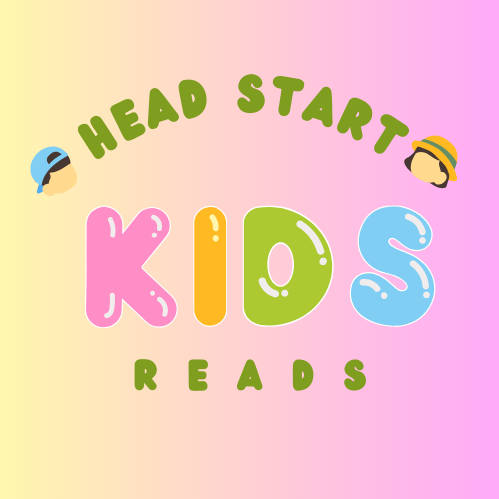Navigating the landscape of early literacy development involves understanding the pivotal moment when children take their first steps into the world of reading. The question of what grade beginning readers are in is a common inquiry for parents and educators alike. This article aims to explore the nuances of this query, shedding light on the diverse paths children take on their journey to literacy. In doing so, we’ll spotlight the Reading Head Start Program, an innovative and research-backed initiative that paves the way for young readers, transcending traditional grade boundaries.

I. The Spectrum of Early Literacy:
- Diverse Developmental Timelines: Early literacy is a developmental spectrum where children progress at their own pace. The traditional notion of grade levels can sometimes be limiting when applied to the intricate process of learning to read. Children’s cognitive, linguistic, and socio-emotional development unfolds uniquely, shaping their readiness to embark on the reading journey.
- Pre-K and Kindergarten Readiness: While formal reading instruction typically begins in kindergarten, many children enter this phase with varying levels of readiness. Pre-K experiences, exposure to language-rich environments, and engagement in pre-reading activities contribute to the foundational skills necessary for a smooth transition into formal reading instruction.
II. The Reading Head Start Advantage:
- Proactive Intervention in Early Years: Reading Head Start stands out as a beacon in the realm of early literacy education by offering proactive intervention during the critical early years. The program’s curriculum is designed to align with the developmental milestones of young learners, ensuring that they are equipped with essential reading skills before entering formal schooling.
- Holistic Approach to Early Literacy: The Reading Head Start Program takes a holistic approach to early literacy, addressing not only phonemic awareness and phonics but also fostering a love for reading. By combining interactive reading sessions, engaging learning games, and parental involvement, the program creates a comprehensive foundation that goes beyond the confines of traditional grade levels.
III. The Transition to Formal Reading Instruction:
- Kindergarten and the Beginning of Formal Instruction: In traditional educational settings, formal reading instruction typically commences in kindergarten. This marks the initiation of systematic phonics lessons, sight word recognition, and the development of foundational reading skills. However, the transition to formal instruction is smoother for children who have been exposed to pre-reading activities and language-rich experiences.
- Reading Head Start as a Precursor: Reading Head Start acts as a precursor to formal reading instruction, providing children with a head start in acquiring essential literacy skills. By instilling a sense of confidence, familiarity with phonics, and a positive attitude toward reading, the program positions young learners for success as they enter the formal education system.
IV. Understanding Individual Readiness:
- Varied Developmental Timelines: Individual readiness for reading is influenced by a myriad of factors, including cognitive development, exposure to literacy-rich environments, and a child’s inherent learning style. Some children may demonstrate an early affinity for letters and sounds, while others may benefit from additional support and encouragement.
- Reading Head Start’s Adaptive Approach: Reading Head Start embraces the understanding that children progress at different rates. The program’s adaptive approach allows for differentiation, catering to the individual needs and readiness levels of each child. This flexibility ensures that children receive targeted support where needed, promoting a positive and inclusive learning environment.
V. The Role of Parental Involvement:
- Crucial Influence of Parents:Parents play a pivotal role in shaping a child’s readiness for reading. Their involvement in early literacy activities, shared reading experiences, and the creation of a print-rich home environment significantly impact a child’s preparedness for formal instruction. Reading Head Start actively involves parents, providing them with tools and resources to be effective partners in their child’s literacy journey.
- Empowering Parents with Reading Head Start: Reading Head Start empowers parents with the knowledge and tools necessary to support their child’s reading development. Through guidance on interactive reading techniques, phonics support, and engaging learning games, parents become active participants in fostering early literacy skills. This collaborative approach ensures a seamless transition from home-based learning to formal instruction.
VI. Bridging the Gap Between Preschool and Formal Schooling:
- Preschool as a Foundation: Preschool experiences serve as a foundational period where children are exposed to early literacy concepts and pre-reading activities. While not all preschools may have a structured reading curriculum, the exposure to language, books, and interactive activities contributes to a child’s overall readiness for the reading journey.
- Reading Head Start as a Bridge: Reading Head Start acts as a bridge between the preschool years and formal schooling. By offering a structured and research-backed curriculum, the program fills potential gaps in early literacy exposure, ensuring that children enter formal education with a solid foundation in phonemic awareness, phonics, and the joy of reading.
VII. The Joy of Learning with Reading Head Start:
- Interactive Reading Sessions: Reading Head Start places a premium on interactive reading sessions that go beyond the mechanics of reading. These sessions are designed to captivate young minds, fostering a genuine love for stories and the written word. The joy of learning becomes a central theme, creating positive associations with reading from the very beginning.
- Gamified Learning Experience: The incorporation of engaging learning games within the Reading Head Start curriculum transforms the learning experience into a playful adventure. These games not only reinforce essential reading skills but also make the process enjoyable and exciting for children, establishing a positive mindset towards learning.
Read Also
What is the best way to teach a child to read?
VIII. Research-Backed Methodology:
- Scientifically Grounded Curriculum: Reading Head Start distinguishes itself by its commitment to a scientifically grounded curriculum. The program’s methodologies are aligned with research findings in cognitive development, educational psychology, and neuroscience. This evidence-based approach ensures that children benefit from strategies proven to be effective in nurturing early literacy skills.
- Positive Outcomes and Success Stories: The efficacy of Reading Head Start is underscored by a multitude of success stories and positive outcomes reported by parents and educators. Children participating in the program showcase advancements in reading proficiency, confidence, and overall academic performance, serving as testimonials to the program’s impact on early literacy development.
IX. The Holistic Impact of Reading Head Start:
- Academic Proficiency and Beyond: Reading Head Start’s impact extends beyond academic proficiency, encompassing broader aspects of cognitive, emotional, and social development. The program’s holistic approach positions children for success not only in reading but also in the multifaceted challenges they encounter as they progress through their educational journey.
- Parental Testimonials and Experiences: Reading Head Start has garnered enthusiastic testimonials from parents who have witnessed the transformative effect of the program on their children. These firsthand accounts attest to the program’s ability to instill a love for reading, boost confidence, and provide parents with valuable tools to actively engage in their child’s literacy development.
X. Nurturing a Lifelong Love for Reading:
- Beyond Grade Levels: Reading, at its essence, transcends the confines of grade levels. It is a lifelong journey that begins with the first encounter with written words. Reading Head Start recognizes the enduring nature of this journey and aims to equip children with the skills, confidence, and enthusiasm to navigate the world of words throughout their lives.
- A Future of Literacy Success: As children embark on their reading journey with the support of Reading Head Start, they are not merely entering a grade level; they are stepping into a future of literacy success. The program’s innovative and comprehensive approach sets the stage for a lifelong love for reading, empowering children to unlock the doors to knowledge, imagination, and lifelong learning.
Conclusion:
In the ever-evolving landscape of early literacy education, the question of what grade beginning readers are in becomes a gateway to understanding the diverse paths children traverse on their journey to reading proficiency. Reading Head Start emerges as a transformative force in this narrative, breaking free from conventional grade boundaries and guiding young learners toward a future where the joy of reading knows no limits.
As parents, educators, and advocates for early literacy, our role extends beyond the rigid constraints of grade levels. It encompasses creating environments rich in language, fostering a love for stories, and embracing innovative programs like Reading Head Start that serve as catalysts for a future generation of confident, proficient, and lifelong readers. In the symphony of early literacy, let us harmonize our efforts to ensure that every child’s journey into the world of reading is filled with joy, curiosity, and the promise of a brighter tomorrow.
